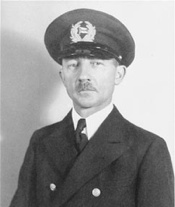Summary | Excerpt | Reading Guide | Discuss | Reviews | Beyond the Book | Read-Alikes | Genres & Themes | Author Bio

Critics' Opinion:
Readers' Opinion:
First Published:
Oct 2013, 576 pages
Paperback:
Sep 2014, 576 pages
 Book Reviewed by:
Book Reviewed by:
Kim Kovacs
Buy This Book
This article relates to The Lion Seeker
One of the subjects raised often throughout The Lion Seeker is the difficulty Jews faced leaving Europe as WWII ramped up. The voyage of the MS St. Louis, sometimes referred to as "The Voyage of the Damned," is referenced in passing.
After Kristallnacht – "The Night of Broken Glass" – on November 9-10, 1938, many Jews started taking steps to leave Germany for other, safer countries. One such attempt occurred when the Hamburg-based MS St. Louis set sail on May 13, 1939 with 937 mostly Jewish German refugees aboard, headed for sanctuary in Cuba.
 The passengers celebrated when the boat left German waters. The captain, Gustav Schröder (1885-1959) insisted that the Jews be treated as any other tourists aboard would be, and consequently they were afforded respect throughout the voyage. They were given good food, entertainment and religious services on Friday evenings. A full-time nursemaid was even provided for the Jewish children aboard. In the words of Lothar Molton, a boy traveling with his parents, people felt like they were on "a vacation cruise to freedom."
The passengers celebrated when the boat left German waters. The captain, Gustav Schröder (1885-1959) insisted that the Jews be treated as any other tourists aboard would be, and consequently they were afforded respect throughout the voyage. They were given good food, entertainment and religious services on Friday evenings. A full-time nursemaid was even provided for the Jewish children aboard. In the words of Lothar Molton, a boy traveling with his parents, people felt like they were on "a vacation cruise to freedom."
Germany seems to have anticipated that the Jews on the St. Louis would have difficulty reaching other countries, however. It's widely believed that they were permitted to embark for propaganda reasons, with the attitude that if they were refused entry everywhere they went, then Germany could not be blamed by these countries for the ultimate fate of the Jews.
The ship reached Cuba on May 27, 1939, and although each person had a legal visa before embarking on the voyage, Cuban President Federico Laredo Brú changed the law on May 5, and permits issued before that date (as most of the refugees' were) were declared invalid. Indeed, the Jews' potential acceptance into Cuba was a huge issue in that country even before the St. Louis departed Germany. A large anti-Semitic demonstration was held in Havana on May 8, and when the Jews were en route they were the subject of anti-Semitic newspaper articles stating that they should not be provided sanctuary. The rationale was that Cuba had already permitted entry to a large number of war refugees, including 2,500 Jews, and that these new immigrants were competing for scarce jobs in the wake of the Great Depression.
The ship was in harbor for six days, and during that time members of the United States cabinet tried to persuade Cuba to accept the Jews. Their efforts were mostly unsuccessful, however; 28 passengers whose visas had been issued after May 5 were permitted to disembark but most were prohibited.
Captain Schröder then directed the crew to head for Florida. The documentation from the time is contradictory, but the captain felt he was prevented from landing, while the United States Coast Guard, which appeared to block the ship from turning toward shore, claimed they were present merely "out of concern toward those on board." Schröder apparently considered running the ship aground so that the authorities would be forced to take the refugees, but the presence of the Coast Guard prevented this from happening. Unlike the climate in Cuba, public opinion in the United States was very sympathetic to the plight of the Jewish refugees. However, U.S. immigration law permitted only 27,370 European immigrants each year, a number which was rapidly filled and created a years'-long waiting list. To permit the refugees ashore would bump others who'd applied via legal means farther down in the line.
A group of Canadian clergy and academics tried to persuade the Canadian Prime Minister, William Lyon Mackenzie King, to allow the refugees to land in Nova Scotia, but other anti-Semitic members of the Canadian cabinet prevailed. The ship had no recourse but to return to Europe.
Captain Schröder, however, refused to return the St. Louis to Germany until the Jews had been provided sanctuary in other countries. By the time the ship docked in Antwerp, Belgium on June 17, the UK had agreed to take 288 passengers. The other 619 were eventually allowed to disembark in Antwerp and were accepted by other countries (224 to France, Belgium took in 214, and 181 went to the Netherlands). At the time, these countries were deemed safe from German influence, but less than a year later Hitler had invaded all three, and the Jewish refugees were once again in danger. 254 were killed during the Holocaust, with just 365 of those who'd remained in Europe surviving to the end of the war.
For his part in the effort to obtain sanctuary for the Jews, "for services to the people and the land in the rescue of refugees," in 1957 Captain Schröder was awarded the Order of Merit by the Federal Republic of Germany. In 1993 he was posthumously named one of the Righteous Among the Nations at the Yad Vashem Holocaust Memorial in Israel.
The voyage has been the subject of many magazine and newspaper articles, as well as the 1974 book Voyage of the Damned, by Gordon Thomas and Max Morgan-Witts, which was made into a movie of the same name in 1976. The U.S. Holocaust Museum in Washington, D.C. features information about it, and in 2011 the Canadian Museum of Immigration at Pier 21, Halifax Nova Scotia dedicated its Wheel of Conscience , a memorial to those who were on the journey.
Picture of Captain Gustav Schröder from United States Holocaust Memorial Museum
Filed under People, Eras & Events
![]() This "beyond the book article" relates to The Lion Seeker. It originally ran in November 2013 and has been updated for the
September 2014 paperback edition.
Go to magazine.
This "beyond the book article" relates to The Lion Seeker. It originally ran in November 2013 and has been updated for the
September 2014 paperback edition.
Go to magazine.





The House on Biscayne Bay
by Chanel Cleeton
As death stalks a gothic mansion in Miami, the lives of two women intertwine as the past and present collide.

The Flower Sisters
by Michelle Collins Anderson
From the new Fannie Flagg of the Ozarks, a richly-woven story of family, forgiveness, and reinvention.

The Funeral Cryer by Wenyan Lu
Debut novelist Wenyan Lu brings us this witty yet profound story about one woman's midlife reawakening in contemporary rural China.
Your guide toexceptional books
BookBrowse seeks out and recommends the best in contemporary fiction and nonfiction—books that not only engage and entertain but also deepen our understanding of ourselves and the world around us.